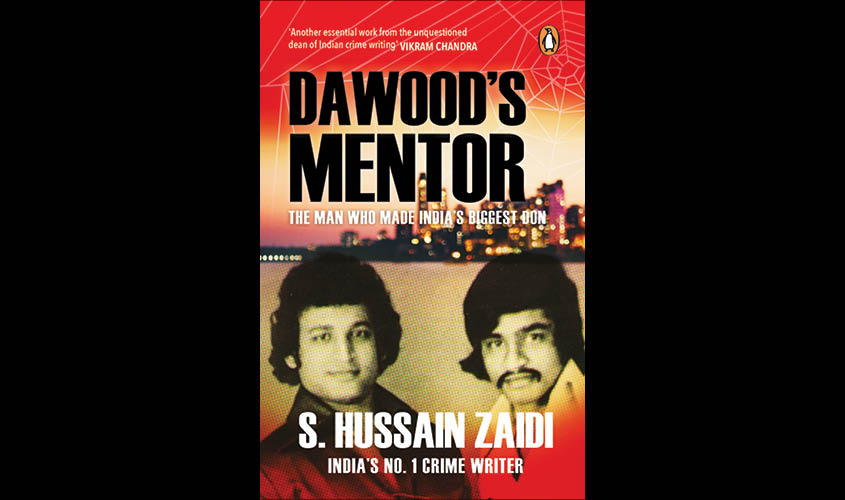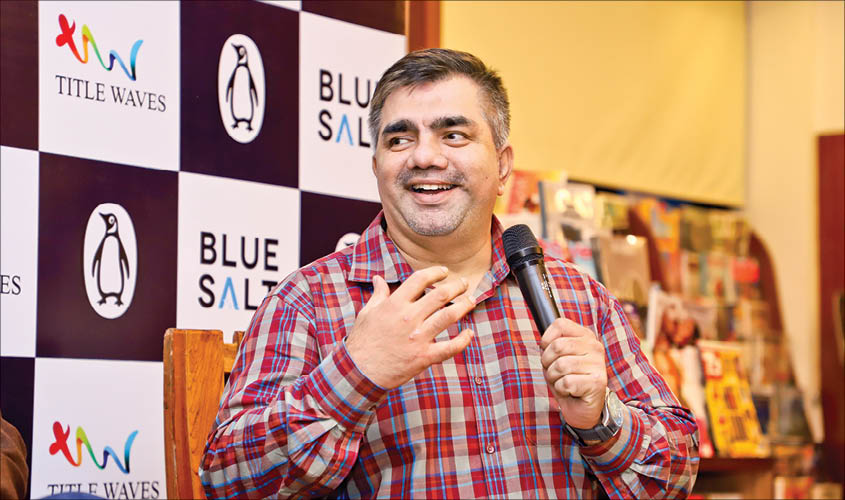Crime writer S. Hussain Zaidi, who has written extensively about the nefarious activities of Mumbai’s criminal underworld, speaks to Utpal Kumar about his latest book, Dawood’s Mentor.
The barrel of the gun was pointed at Dawood Ibrahim’s heart. The shooter had parked himself for a long time, waiting for the right moment to hit the target. As he got one, he pulled the trigger. But as the bullet whizzed towards the man who would later become India’s most-wanted criminal, Khalid Pehelwan screamed,“Dawood hato!” Khalid pushed him aside and the bullet, which was meant for Dawood’s heart, hit the Pehelwan’s left arm.
That day, Dawood owed his life to Khalid. But if author S. Hussain Zaidi is to be believed, it’s not just that Khalid saved his life, he was the one who made Dawood the don he eventually became. “Khalid had taught him the felicity to survive against the heaviest odds. His lessons never went waste with Dawood,” Zaidi writes in his latest book, Dawood’s Mentor: The Man Who Made India’s Biggest Don, which looks at the unlikely friendship between the two, and how they defeated and neutralised every mafia gang in Mumbai.
The following is an edited excerpt of the interaction with the author about the book, the Mumbai mafia, its Bollywood connections and more.
Q. This book is about Dawood’s mentor, Khalid Pehelwan. As you mention in the book, he saved Dawood’s life several times. How did he influence Dawood’s life, work and even character?
A. Dawood dropped out of school early. In a natural progression, he fell into bad company and subsequently Khalid became his role model. Khalid was a trained wrestler who has great confidence in his Herculean strength to this day. Dawood picked up such traits from Khalid. And Khalid can rightfully be credited with training Dawood in the nuances of smuggling, negotiating with dealers and fighting bloodthirsty wars with his rivals. Finally, Dawood also honed his survival skills and the art of cerebral warfare under the tutelage of Khalid.
Q. You also mention Khalid’s and Dawood’s Bollywood connections. What explains the Mumbai mafia’s obsession with Bollywood? Does this link still hold as strongly as in the past?
A. Not just Khalid and Dawood, the entire world is obsessed with Bollywood! And for a gangster, larger-than-life characters portrayed by superstars on 70mm screens also provided some kind of reference model to emulate. To answer the second part of your question, it was extremely difficult for a commoner to gain access to a film star prior to the 1970s and through to the 1990s. But the Mumbai mafia spread its tentacles across the world, and it became easier for them to rub shoulders with film stars on foreign shows through some slimy distributor in European territory. The mafia, powered by the fear of their guns and the weight of their finances, entered into unholy matrimony with Bollywood, which has continued to this day. Nowadays, Bollywood shows are more organised and protected but the link will exist as long as Bollywood and the mafia continue to function.
Q. Mumbai mafia is dead, we are told. If so, what explains its decline?
A. Mumbai mafia is not dead. Arun Gawli and Abu Salem are in jail, but Salem may be released in another 11 years. As per the extradition treaty signed between India and Portugal, he cannot be jailed for more than 25 years and he has now roughly spent 14 years in incarceration. He will be out, he is still young and there is no guarantee that he will lead a life of remorse or repentance. Chhota Shakeel is very much alive. Dawood and Anees Ibrahim are alive and active in Mumbai’s real estate and gold market. So the mafia’s bullets may not be whizzing across the streets of Mumbai anymore, which can thankfully be attributed to the era of encounters unleashed by the Mumbai Police. But again, it does not mean the mafia is dead. They have merely changed the manner of their operations.
Q. Coming back to Dawood, what explains your obsession with him? And what makes him such an enigmatic don?
A. [Laughs] At the outset, I am not obsessed with Dawood. I am a crime journalist and Dawood is a subject of interest for me. To provide a perspective, a sports journalist will track the sportsman who generates the maximum news. Similarly, a crime journalist will track the ganglord who is constantly in the thick of things. It was purely incidental that Dawood Ibrahim happened to be the fountainhead of crime during my days as a journalist. Naturally, there are a lot of stories around him. I would have tracked any other person with the same urgency. I have also covered other mafia gangs in my books Byculla to Bangkok and Mafia Queens of Mumbai.
Second, Dawood is not an enigmatic don. He is rather easy to understand. Someone like Arun Gawli is much more inexplicable than Dawood.
Q. You have interacted with Dawood. How do you look at him?
A. I have had only one interview with him. My perception was that he’d be very uncouth and rude but the civility of his language surprised me. He mildly protested to uncomfortable questions and even displayed a sense of humour when I persisted for an answer.
Q. Reports suggest that Dawood is well past his prime. Do you agree? Who do you think would succeed him?
A. I haven’t come across such reports. Those who have tracked Dawood know that his footprints are all over the globe. Agencies still intercept his calls over various Internet calling products. So he is very much active. It would not be fair to predict his successor. Whoever in the D-Company can hegemonise the gang and manage to outlive Dawood Ibrahim will be the successor to the syndicate. It can be Shakeel or Anees or someone else but none of them will have the stranglehold that Dawood has held over the mafia.

Q. Are you ever scared that dealing with such gangsters could be dangerous? What are your parameters of engagement with them?
A. Gangsters are dangerous if a journalist has a partisan attitude or an agenda to run. If a journalist is judicious to his work, no harm will come his way. Of course, the price of indiscretion is far too heavy. So, I do not treat gangsters as my friends, nor do I let them feel that I am their friend. My interactions with them are in a purely professional capacity.
Q. Dongri is always in the background of your work. What helps dons and Dongri connect?
A. Dongri is to Mumbai is what Palermo was to the Italian mafia. It is a hub of activity in South Mumbai and a predominantly Muslim locality. It was the epicentre of the operations of Haji Mastan, Karim Lala, Bashu Dada and Dawood. Hence, it is often found in the settings and narrative of my work. One of the reasons for dons to emerge in this area is its proximity to the Mazgaon docks which offered an entry point into the smuggling of electronics and contraband.
Q. Is it easier to tell a crime story in a nonfiction format rather than a fictional one? What explains the success of crime stories?
A. With due respect to fiction writers, I feel fiction is easier to create because the creative freedom and possibilities are as endless as the writer’s imagination. Non-fiction has to work within the confines of facts and other limitations.
When I wrote Black Friday, I had no idea it would turn out to be so popular among the masses. The huge success of my first book and the crime genre in general has even left me surprised.
Q. Among other crime writers whom do you like the most, and why?
A. The narrative techniques of Ashwin Sanghi and Ravi Subramanian are amazing. Bilal Siddiqui is another talented writer who has moved on to writing about international espionage and spy games. But my favourite author is Vikram Chandra—perhaps the greatest storyteller of our times. There is an unimaginable beauty in his sentences, a certain complexity which simplifies deep into the layers of his paragraphs and which often leaves the reader gasping for breath long after the pages have been turned over.
‘Dawood’s Mentor: The Man Who Made India’s Biggest Don’, by S. Hussain Zaidi, is published by Penguin

